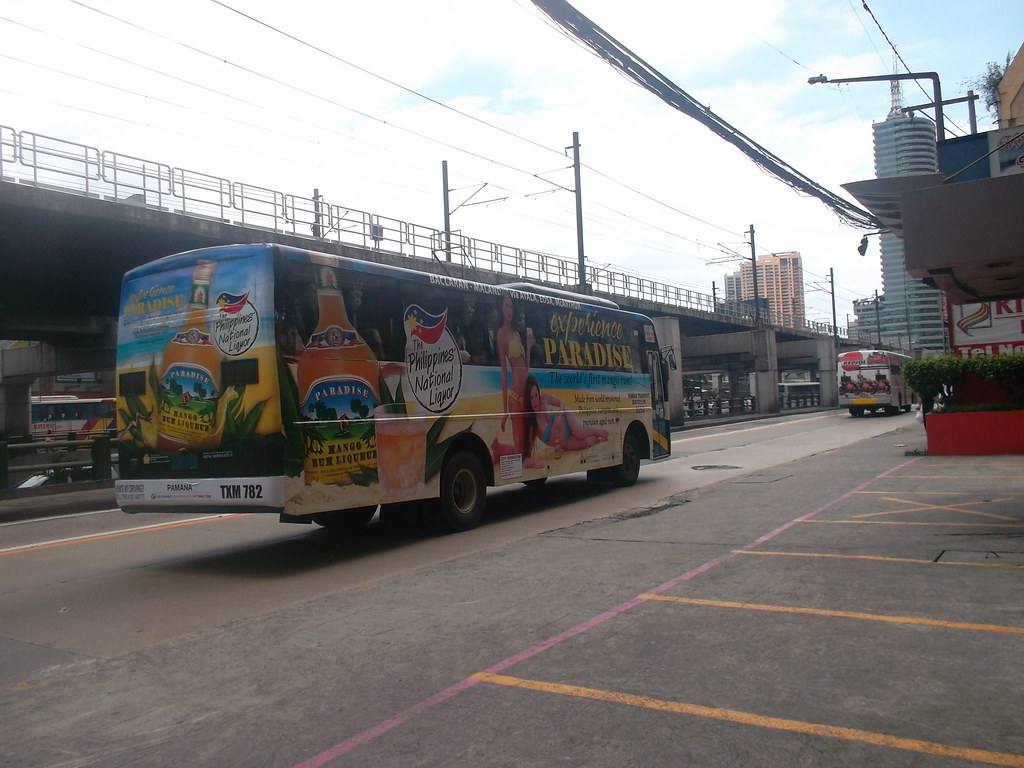Leading Benefits of Transit Advertising Philippines for Services
Wiki Article
An In-depth Assessment of the Strategies and Methods for Successful Transportation Advertising And Marketing Campaigns
Transit advertising projects provide an one-of-a-kind opportunity for brand names to involve with diverse target markets in dynamic settings. As we discover these critical parts, it ends up being clear that the path to an impactful transit advertising and marketing method is both elaborate and gratifying, raising the concern of exactly how best to browse these complexities for maximum brand visibility.Comprehending Target Demographics
Comprehending target demographics is vital for the success of transit ad campaign (Transit Advertising Philippines). Identifying particular target market segments makes it possible for advertisers to tailor their messages properly, ensuring that the content resonates with the desired viewers. This technique boosts involvement and makes the most of roiTo successfully assess target demographics, marketers must think about numerous vital aspects, including age, earnings degree, occupation, and way of life choices. For circumstances, a project targeted at young professionals might concentrate on convenience and modernity, while one targeting households could highlight security and dependability. Furthermore, geographical aspects such as rural versus metropolitan setups can significantly influence consumer habits and choices.
Information collection approaches such as studies, emphasis teams, and social media analytics provide useful understandings into demographic trends and consumer practices. By leveraging this information, advertisers can craft engaging narratives that line up with the worths and requirements of their target market.
Ultimately, comprehending target demographics not just notifies the tactical direction of transit marketing campaigns but also makes sure that resources are assigned efficiently. This targeted approach boosts the possibility of achieving project goals, cultivating brand name loyalty, and driving conversions.
Creative Layout Strategies
Reliable interaction with target demographics depends heavily on cutting-edge imaginative style techniques in transportation ad campaign. To successfully capture focus in a congested aesthetic setting, developers should prioritize clearness and visual influence. Utilizing high-contrast elements and vibrant colors can enhance visibility, ensuring that messages are conveniently clear from a distance.Integrating vibrant imagery that reverberates with the target audience is critical. Aesthetic storytelling methods can stimulate emotions and produce remarkable associations with the brand name. Furthermore, critical use typography assists convey necessary information quickly; understandable font styles and suitable sizes even more improve readability.
Integrating interactive elements, such as QR codes or enhanced truth functions, can involve commuters beyond passive monitoring (Transit Advertising Philippines). These strategies not just advertise user interaction but also connect the space in between typical marketing and electronic engagement
Additionally, utilizing space creatively-- whether on bus covers, transit sanctuaries, or metro ads-- can lead to innovative layouts that break the mold and mildew of conventional advertising. By embracing artistic creative thinking while maintaining brand uniformity, projects can promote a strong connection with their audience, ultimately driving both recognition and activity. The integration of these style methods is vital for attaining effective transit advertising outcomes.
Strategic Positioning Approaches
Maximizing the influence of transportation marketing hinges on calculated positioning approaches that make certain ideal presence and engagement. Reliable positioning involves evaluating high-traffic areas and recognizing guest demographics to determine the most helpful locations for ad displays. For circumstances, positioning advertisements near entryways and exits of transportation cars can record the interest of boarding and alighting guests, thus improving exposure.Moreover, making use of both indoor and external surfaces of transportation cars can substantially broaden reach. Outside ads, noticeable during commutes, engage pedestrians and various other motorists, while interior advertisements target travelers in a restricted atmosphere. In addition, putting promotions en route hubs, such as bus terminals or train terminals, permits raised impressions as commuters transition in between different settings of transportation.
Timing is also important; aligning the campaign launch with peak travel durations optimizes audience interaction - Transit Advertising Philippines. Moreover, leveraging digital screens en route settings can facilitate dynamic material, offering real-time updates and boosting user communication. By using these tactical placement techniques, online original site marketers can make certain that their transportation advertising campaigns achieve maximum presence, reverberate with the target market, and inevitably drive wanted results

Measuring Campaign Efficiency
To examine the success of transit marketing campaigns, it is vital to employ a variety of measurement techniques that offer insights right into audience involvement and overall effectiveness. One primary approach is making use of crucial efficiency indications (KPIs), such as reach, impacts, and interaction rates, which measure exactly how lots of people saw the advertisement and engaged with it.Surveys and emphasis groups can also contribute in determining consumer perceptions and recall, allowing marketing experts to comprehend the impact of their messaging. Additionally, tracking website web traffic and social media involvement during and after the project helps measure straight responses to the advertising and marketing.
An additional effective strategy is using location-based analytics, which can provide information on foot traffic around details transit areas, providing insights right into whether the project efficiently recorded the interest of travelers. In addition, examining sales data can expose relationships between transit marketing and increased profits, giving substantial evidence of a campaign's performance.
Study of Success
Recognizing the efficiency of transportation marketing campaigns with dimension strategies lays the foundation for analyzing real-world instances that illustrate successful results. By employing geo-targeted digital ads and analytics, the brand measured a 30% boost in sales in regions where the wraps were plainly shown, demonstrating the direct impact of transit marketing.An additional compelling example comes from a neighborhood nonprofit organization that introduced a campaign on metro systems to promote a neighborhood occasion. The usage of direct engagement through innovation amplified the project's reach and efficiency.

Verdict
In summary, effective transit ad campaign demand an extensive approach that integrates an understanding of target demographics, ingenious layout techniques, and critical placement. By prioritizing emotional involvement through strong visuals and maximizing visibility throughout peak travel times, brands can dramatically enhance their effect. Moreover, ongoing measurement of project effectiveness with vital performance indications and customer feedback guarantees continual renovation. Collectively, these methods foster brand name presence and make the most of the roi in transit advertising and marketing initiatives.Comprehending target demographics is critical my review here for the success of transit advertising campaigns.Reliable interaction with target demographics counts greatly on ingenious imaginative design strategies in transit marketing campaigns. By employing these tactical placement techniques, marketers can make certain that their transportation marketing campaigns accomplish optimal exposure, resonate with the target audience, and ultimately drive desired end results.
Comprehending the efficiency of transit advertising projects with measurement methods lays the groundwork for checking out real-world instances that show successful results.In recap, effective transportation advertising and marketing campaigns demand an extensive strategy that incorporates an understanding of target demographics, innovative design methods, and critical placement.
Report this wiki page